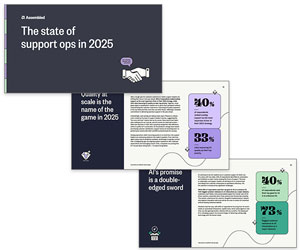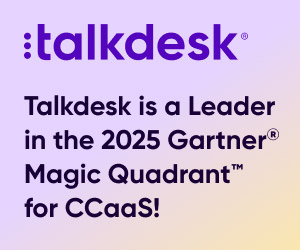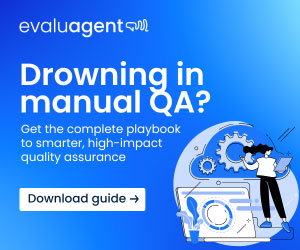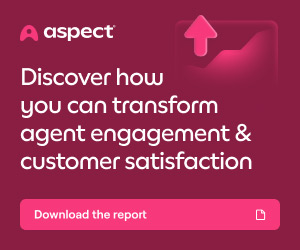Whitney Rose at Assembled breaks down why traditional chat support fails, and what companies need to build resolution-first AI that actually earns customer trust.
Chat was supposed to make support easier. Faster answers, no hold music, and help in a format people actually like.
But somewhere along the way, the experience broke.
Instead of resolving issues, many chat tools frustrate the customer at the moment they need help most. They deliver canned responses, drop context, or make people repeat themselves – and that’s if they work at all.
The consequences go far beyond a single interaction. One poor experience can be enough to drive someone away for good.
In fact, 70% of consumers say they’d consider switching brands after a bad encounter with an AI chatbot. And most don’t tell you why – they just stop coming back.
The Illusion of Efficiency: Why Deflection-First Chat Support Fails
For years, support automation was measured by how much it could deflect. The logic was simple: fewer human touchpoints meant lower costs.
On paper, it worked. Ticket volumes went down. Resolution times improved. Dashboards lit up green.
But shaving minutes off an interaction doesn’t mean the customer got what they needed.
Most deflection-first chat tools were built to exit conversations quickly – a reflection of early AI investments focused more on volume than value. They follow rigid flows, miss nuance, and fail the moment something unexpected comes up.
Customers notice. Some escalate while others give up completely. Either way, the frustration lingers. Agents end up managing the fallout instead of moving work forward. And leaders inherit inflated dashboards that mask deeper operational debt.
Worse still: most customers won’t tell you what went wrong. Only a third offer direct feedback after a poor support experience. The rest? They disappear – or vent elsewhere.
The Brand Tax of Bad Chat: How Broken Experiences Hurt Loyalty
When chat support doesn’t deliver, it undermines more than a single conversation. It erodes confidence in the brand behind it.
It starts small: a missed cue, an irrelevant reply, a long wait with no resolution. But those friction points stick with customers and shape their expectations moving forward.
More than half of consumers will switch to a competitor after just one bad experience. After multiple issues, that number jumps to 73%. These aren’t isolated frustrations – they signal risk across your entire base.
And the costs are staggering. Globally, poor customer experiences now put $3.7 trillion in revenue at risk every year.
Chat is often the first interaction someone has with your brand. If it falls flat, it may be the last.
Why Traditional Chatbots Break Under Pressure
Most chatbots were designed to handle volume, not complexity. That’s why they crack when things get real.
Rigid Flows Fall Apart Fast
Scripted chatbots can manage straightforward questions. But the moment a request goes off-script, they stall, loop, or tap out.
They Forget What Matters
When chatbots lose track of the conversation, customers are forced to start over. Key details get dropped. Context disappears. Frustration builds.
Off-Brand and Out of Step
Too many chatbots sound generic, robotic, or worse – nothing like your team. Customers notice when tone and language don’t feel aligned.
Success Metrics Miss the Point
If a chatbot’s primary goal is to contain tickets, it’s solving for the wrong outcome. What looks efficient in a dashboard can create more rework, churn, and cost downstream – especially when generative AI tools are oversold and underperform in high-stakes scenarios.
What Trustworthy Chat Support Looks Like Today
Modern support isn’t just fast. It’s built to understand, adapt, and follow through.
Here’s what that looks like in practice:
It Solves the Issue
AI agents should do more than hand off help centre links. The best ones understand intent, navigate policy, and close the loop – especially when supported by a well-structured knowledge base that AI can actually use.
It Knows When to Escalate
Not every question should be answered by automation. A good agent recognizes its limits – and makes warm, seamless handoffs when needed.
It Sounds Like Your Brand
Support should feel consistent, whether it comes from a person or an AI. With the right tools, tone and language can match your voice across every interaction.
It Drives Real Results
Resolution-first AI doesn’t just lighten the load – it raises the standard.
Customers feel supported. Agents get time back. And teams operate with more clarity and less friction.
That’s why more companies are shifting away from chatbots built to deflect – and instead designing automation that actually scales with quality.
Deflection-First vs. Resolution-First
That shift in purpose – from deflection to resolution – shows up in everything from how these systems are designed to how they impact your team and customers. Here’s how the two approaches compare.
| Deflection-First Chatbots | Resolution-First AI Agents | |
|---|---|---|
| Purpose | Avoid human contact | Solve the customer’s issue |
| Design | Scripted, rigid flows | Remembers history, hands off seamlessly |
| Context Handling | Drops details, repeats questions | Remembers history, hands off seamlessly |
| Tone | Robotic, inconsistent | Brand-aligned, empathetic |
| Experience | Frustrating, transactional | Helpful, trustworthy |
| Measurement | Containment rate | Resolution, CSAT, efficiency |
| Impact | Rework, churn, cost spikes | Loyalty, savings, team focus |
Bad chat treats support like a cost to reduce. Smarter automation sees it as a relationship to protect.
This blog post has been re-published by kind permission of Assembled – View the Original Article
For more information about Assembled - visit the Assembled Website
Call Centre Helper is not responsible for the content of these guest blog posts. The opinions expressed in this article are those of the author, and do not necessarily reflect those of Call Centre Helper.
Author: Assembled
Reviewed by: Rachael Trickey
Published On: 20th Jun 2025
Read more about - Guest Blogs, Assembled






 Assembled is a Support Operations platform that helps companies maintain exceptional customer experiences, no matter what lies ahead. Leading brands use Assembled's workforce and vendor management capabilities to make optimal staffing decisions, gain visibility into performance and productivity, and unlock new ways to serve evolving customer needs.
Assembled is a Support Operations platform that helps companies maintain exceptional customer experiences, no matter what lies ahead. Leading brands use Assembled's workforce and vendor management capabilities to make optimal staffing decisions, gain visibility into performance and productivity, and unlock new ways to serve evolving customer needs. 


































